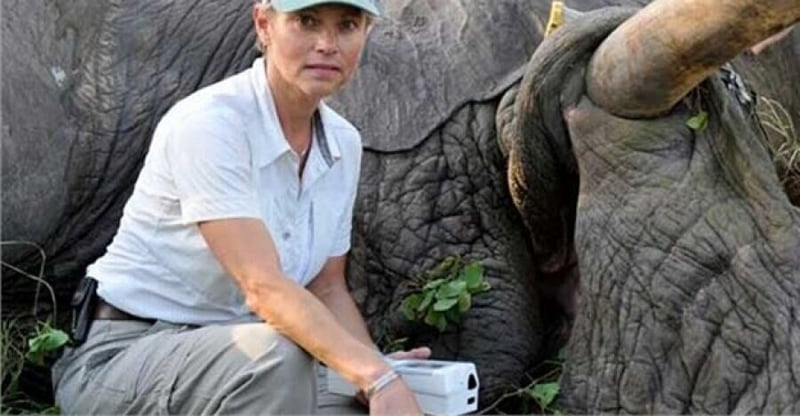Animal studies give a clearer picture of TB
Written by: MyPressportal Team Save to Instapaper
Studying tuberculosis (TB) in animals provides valuable insight to the biological mechanisms causing the disease in both wildlife and humans.“For instance, the bacterium causing TB in dassies differs from the one causing it in warthogs,” explains Professor Michele Miller, whose work forms part of TB-related research in the Faculty of Medicine and Health Sciences (FMHS) at Stellenbosch University.
“The value of this research group is that we provide a better understanding of how TB organisms react in different animals [hosts].
One health approach
“We are also investigating the role of host genetics, immune responses and other factors that contribute to susceptibility and progression to disease, as well as how this group of bacteria changes over time and in different species. Not only does TB pose new threats to Africa’s wildlife, but it can also spread between animals and from animals to humans and back,” she explains.
Miller supports a “one health” approach to investigating the diversity of mycobacterial infections and consequences of the disease, especially in wildlife. She explains: “You cannot only look at one part of the picture regarding the organisms that cause TB. Humans, animals and the diseases they might share, operate in a complex system that is impacted by the environment in which they live. We need to look at the full picture, including how the pathogens change as well as host adaptations, to prevent and manage TB in animals and humans.”
Miller and her team are currently doing research on various wildlife species, including in the Kruger National Park (KNP). They are, for instance, investigating innovative diagnostic tools to test for TB infection in wildlife. Genetics play an increasingly important role in their research. Gene expression assays, which can be performed by using a single blood test, are being developed for lions, mongooses, warthogs, elephants, hyenas and wild dogs.
Novel biomarkers
Blood-based tests can also detect immune responses in infected animals. “Similar to a skin test, an infected animal will have blood cells that react when incubated with proteins from the TB organisms. Immune responses can then be measured in the blood sample or even in DNA from the sample.”
The group has found novel biomarkers that can distinguish infected from uninfected animals, using these techniques.
Doing this kind of research entails many challenges, Miller says. “It is not easy to work with wild animals. Research on wildlife is risky and costly.”
Socioeconomic impacts
According to Miller research on TB in wild animals is relevant for several reasons, including the health of ecosystems and the cycle of infection and reinfection that can occur. “The better our understanding of the disease, the better the management practices which can be put in place to prevent the spread of infection.
“Based on our recent work, it appears that half of the KNP’s lions in the southern area are infected, but we are still trying to understand its impact on other less studied species. We are also investigating the role that these other animals (for example warthogs and antelope) play as hosts of the bacteria and in the environment.”
In some cases, for instance in meerkat colonies, animal TB is known to have caused local extinctions. This can have various health and socioeconomic impacts, for example on the wildlife tourism industry. “For instance, if the Kruger loses its lions or buffaloes, what would the impact on ecotourism be? We are trying to help understand this kind of scenario and prevent it from being introduced in other locations.
“Significant knowledge gaps regarding the epidemiology and risk factors associated with animal TB still exist. Research is crucial to inform strategies to prevent and manage TB.”
Get new press articles by email
We submit and automate press releases distribution for a range of clients. Our platform brings in automation to 5 social media platforms with engaging hashtags. Our new platform The Pulse, allows premium PR Agencies to have access to our newsletter subscribers.
Latest from
- 7 Business Trends Your SME Can Leverage In 2026
- Sadilar Amplifies Visibility And Impact During Conference Season
- Future-ready Logistics- 5 Shifts TO Watch In 2026 (SUB-saharan Africa)
- Dunlop Urges Motorists To Prioritise Tyre Safety On The Busy Joburg To Cape Town Festive Route
- Poverty Trends Report Shows National Progress But Flags Growing Challenges In Gauteng
- SDG Challenge SA 2025 Highlights The Power Of Youth Innovation In Shaping A Sustainable Future
- Experienced Industry Leader Pauli Van Dyk Named Dean Of AFDA’s Upcoming Hatfield Campus
- South Africans Keep Tourism Alive As Homegrown Travel And Local Spending Rise
- Pretoria Student Wins Global Excel Esports Competition
- AfDB Steps Up Support For Somalia With $76m Investment In Roads And Regional Integration
- Corporate Law Experts Warn Directors Of Serious Consequences For Improper Transaction Approval
- New 3% Inflation Target Begins To Shift Expectations In South African Economy
- Retail As A Development Catalyst Drives New Africa Developments’ Inclusive Growth Strategy
- Collaborative SEF Model Shows How Civil Society And State Can Rebuild Economic Trust
- Shumani Accelerates Industrial Growth With Bheka Forklifts And New Equipment Plans For 2026
The Pulse Latest Articles
- Education Is The Frontline Of Inequality, Business Must Show Up (December 11, 2025)
- When The Purple Profile Pictures Fade, The Real Work Begins (December 11, 2025)
- Dear Santa, Please Skip The Socks This Year (December 10, 2025)
- Brandtech+ Has 100 Global Creative Roles For South African Talent (December 9, 2025)
- The Woman Behind Bertie: Michelle’s Journey To Cape Town’s Beloved Mobile Café (December 9, 2025)
